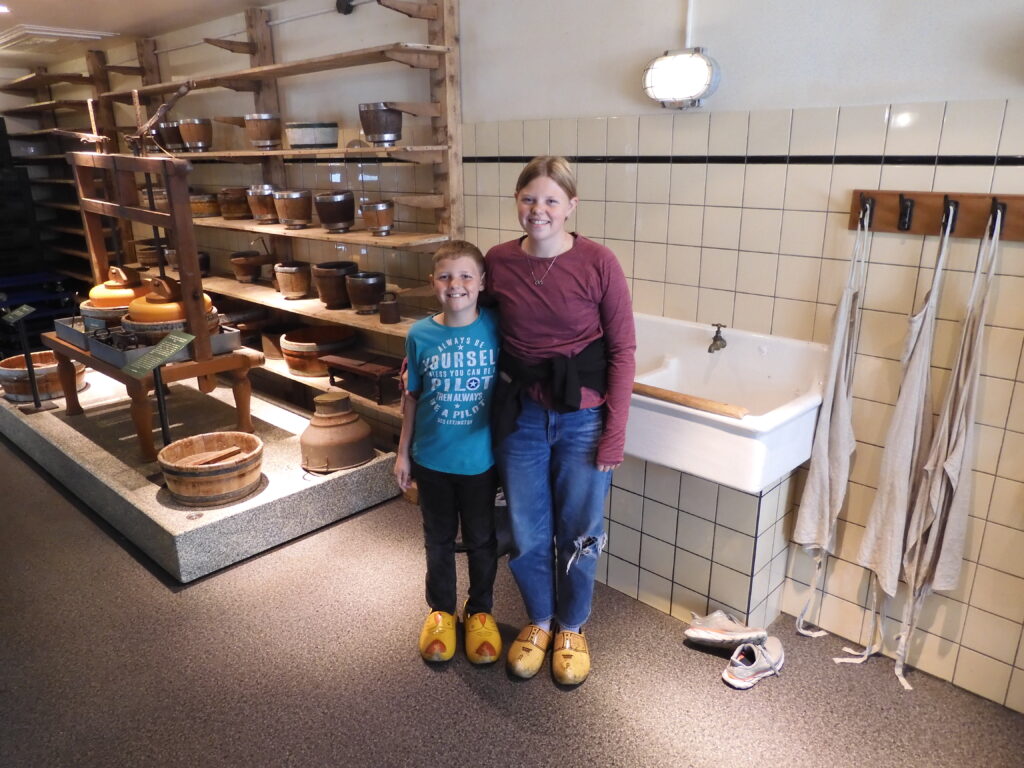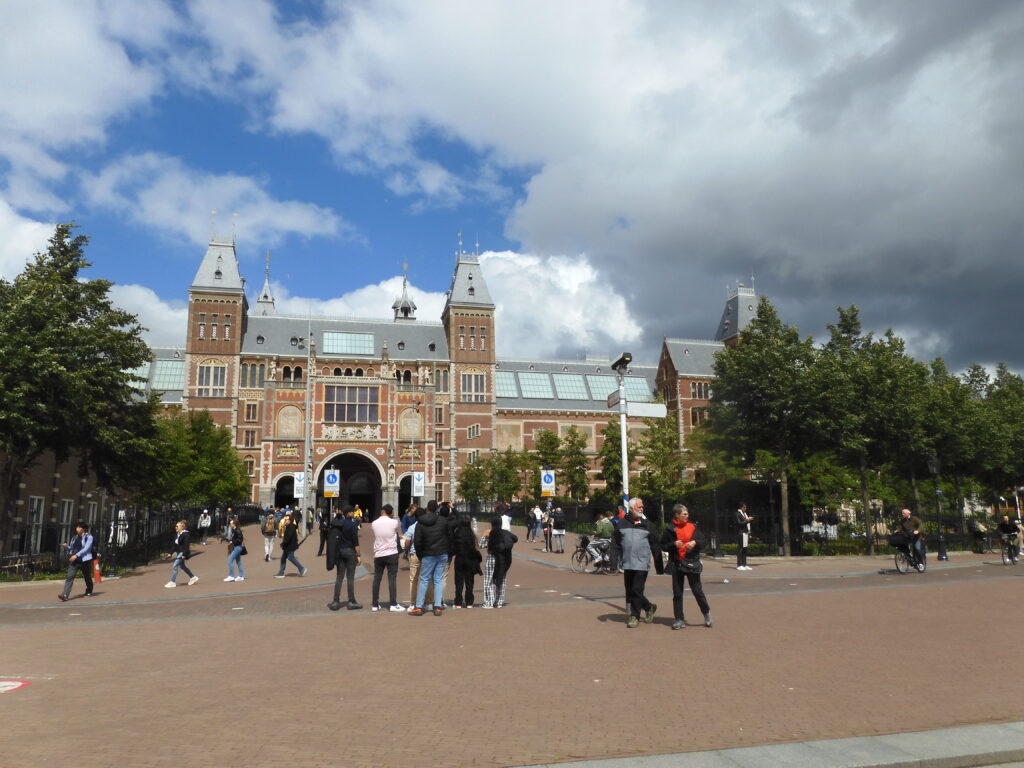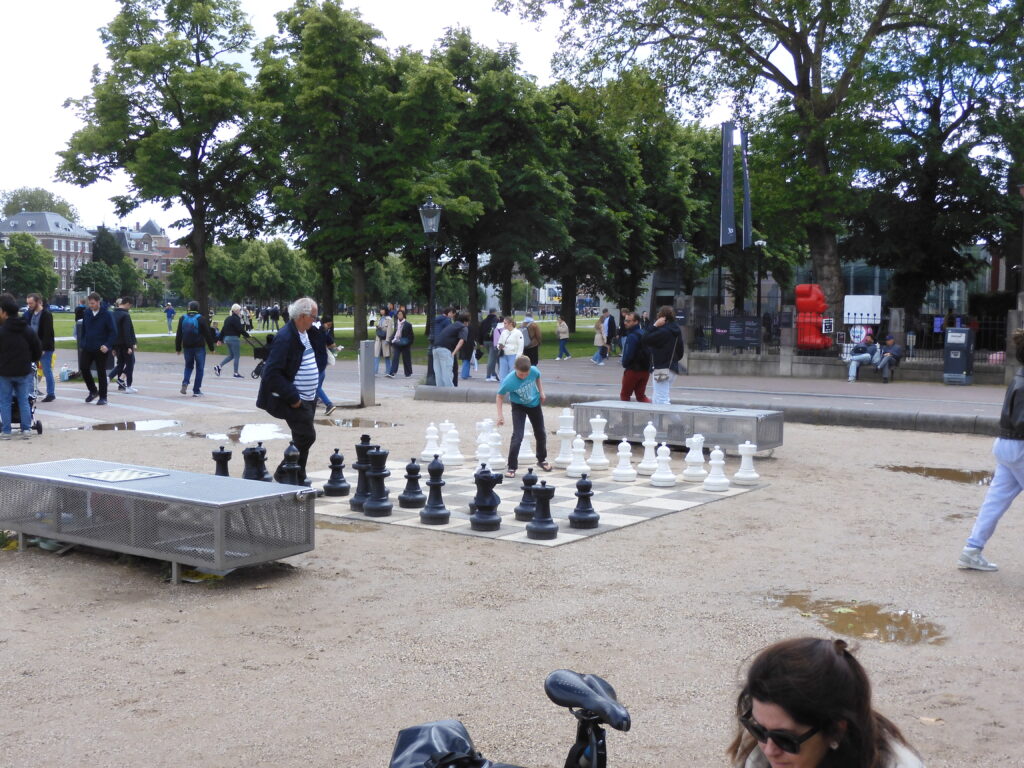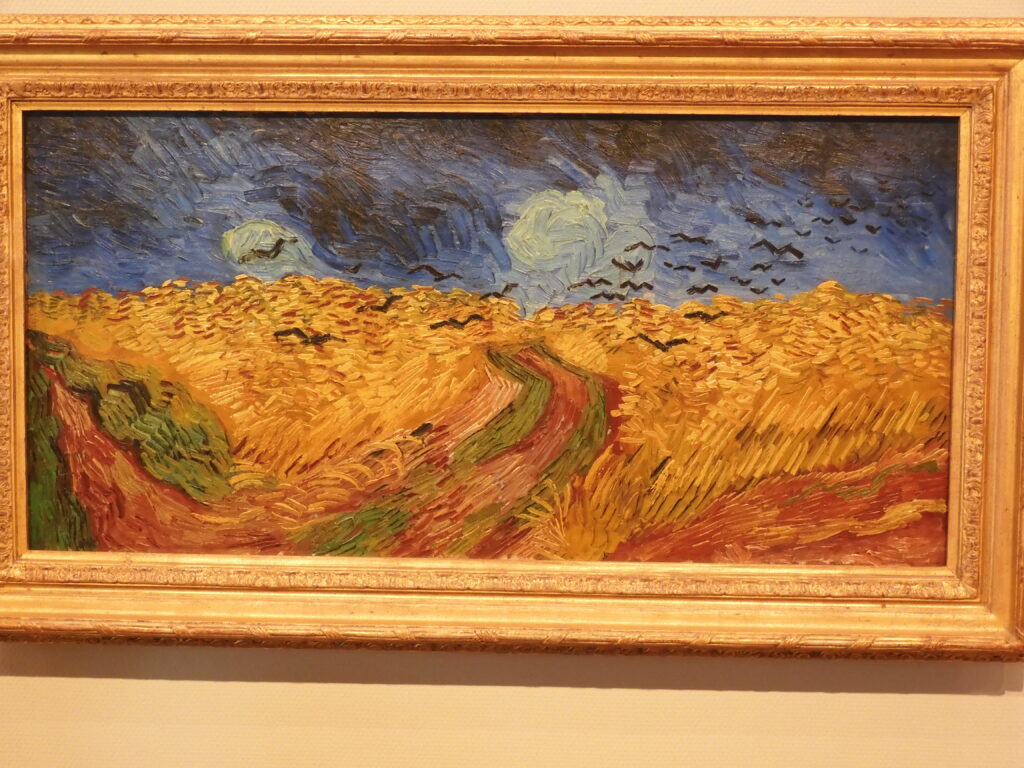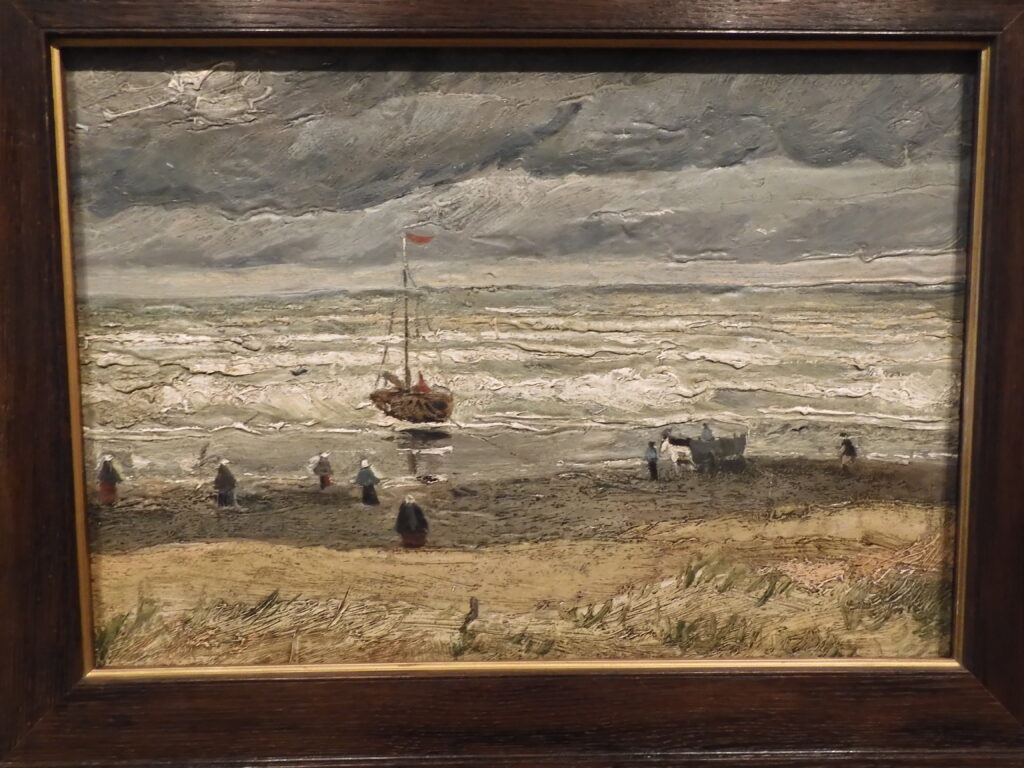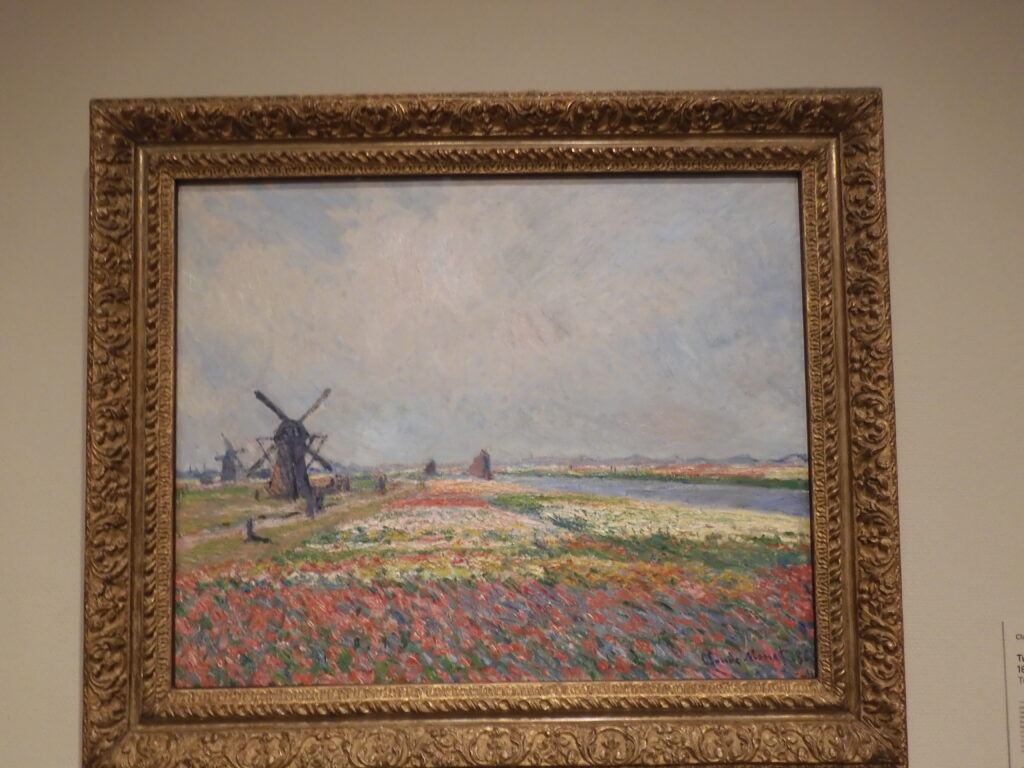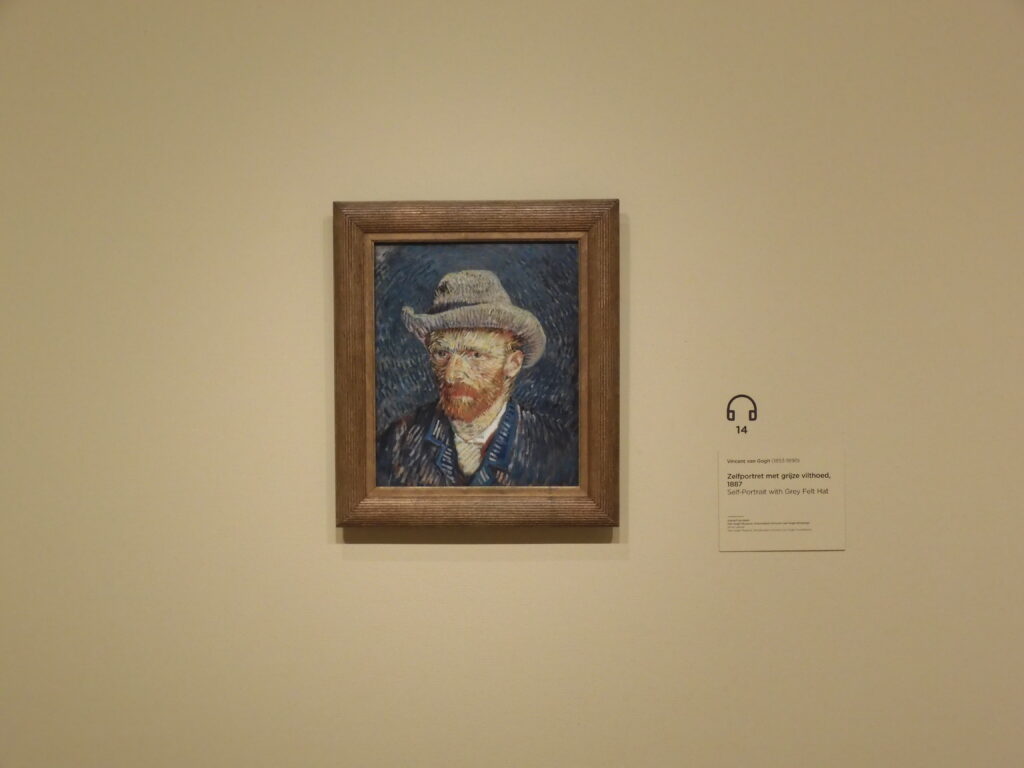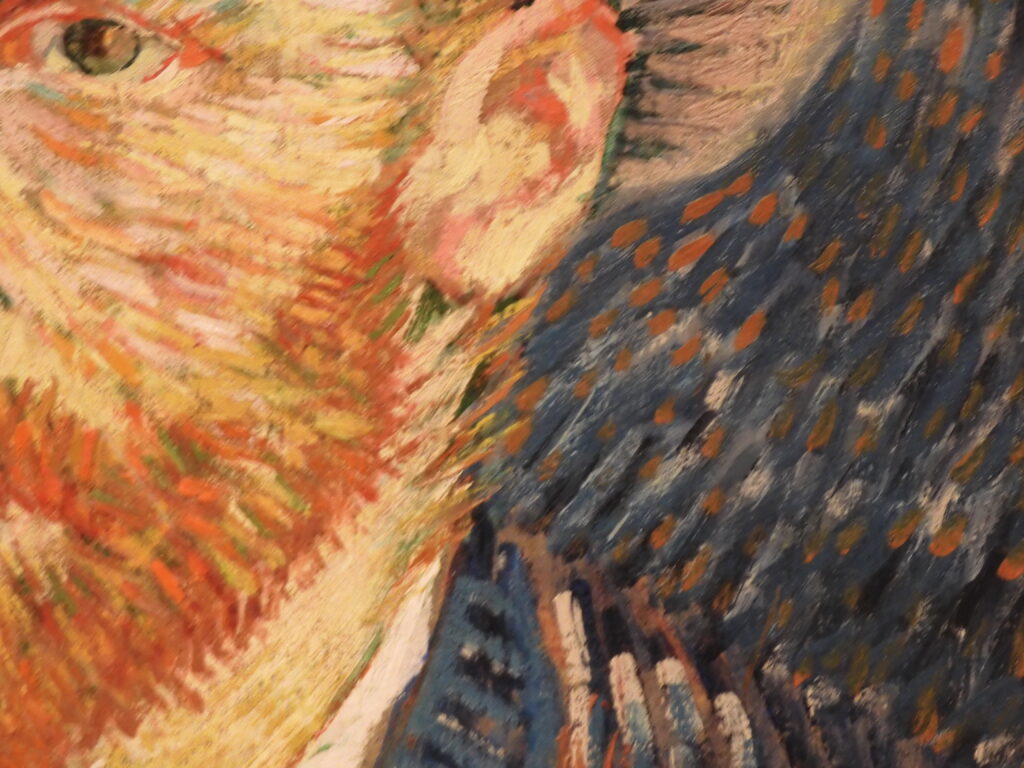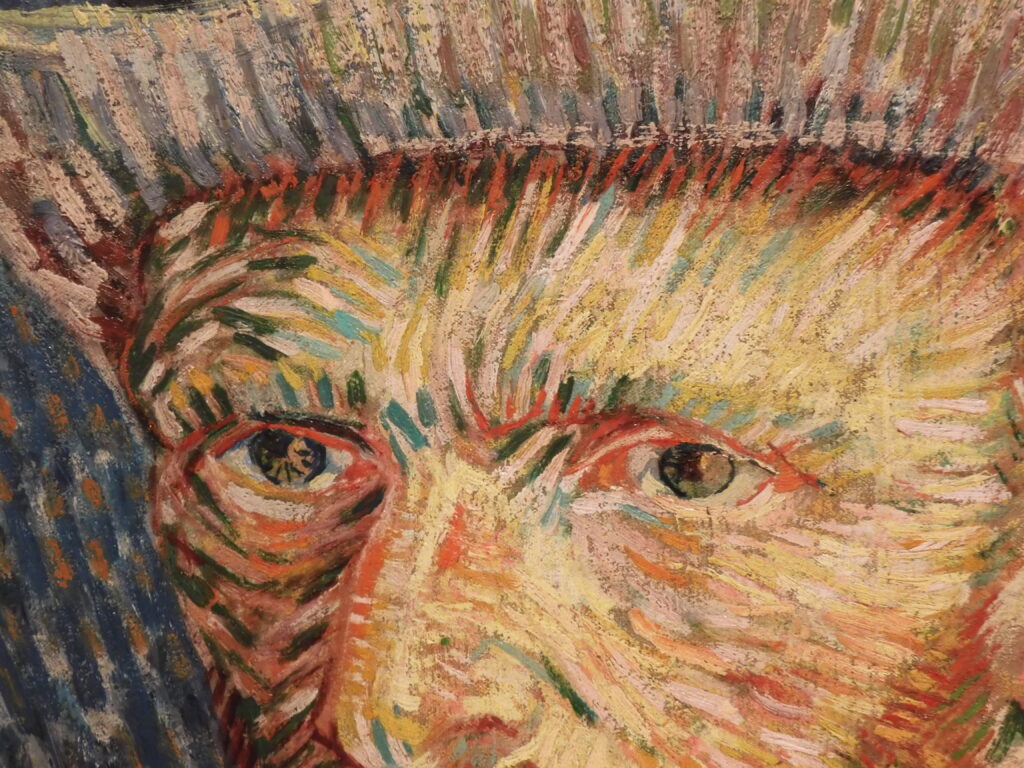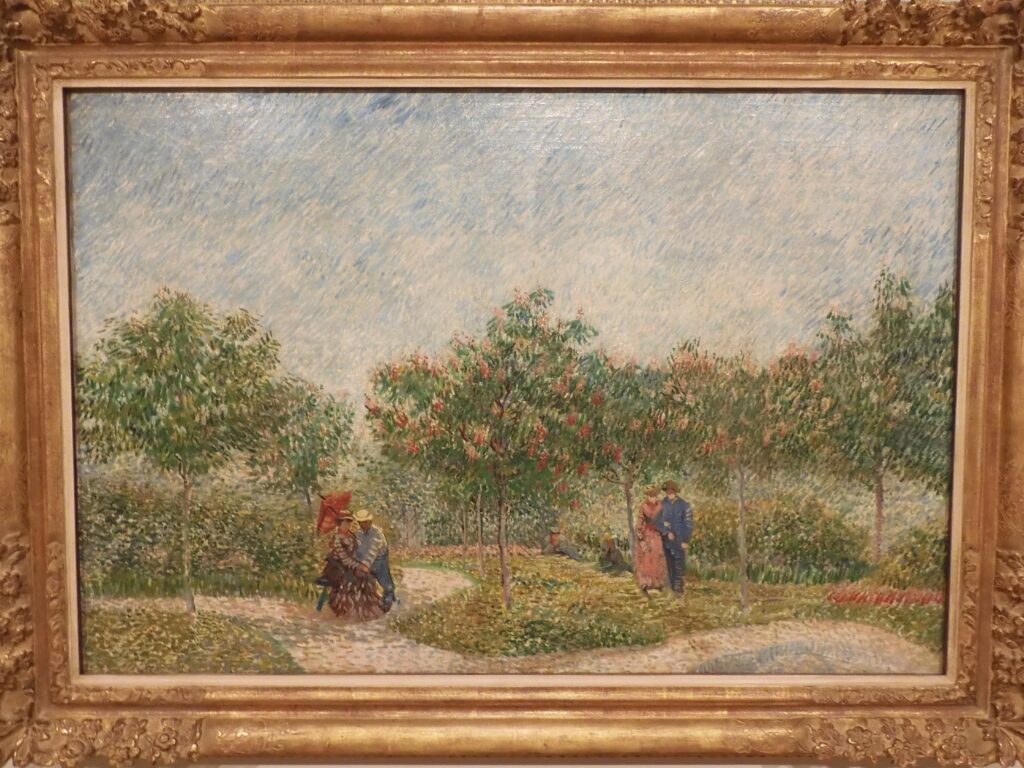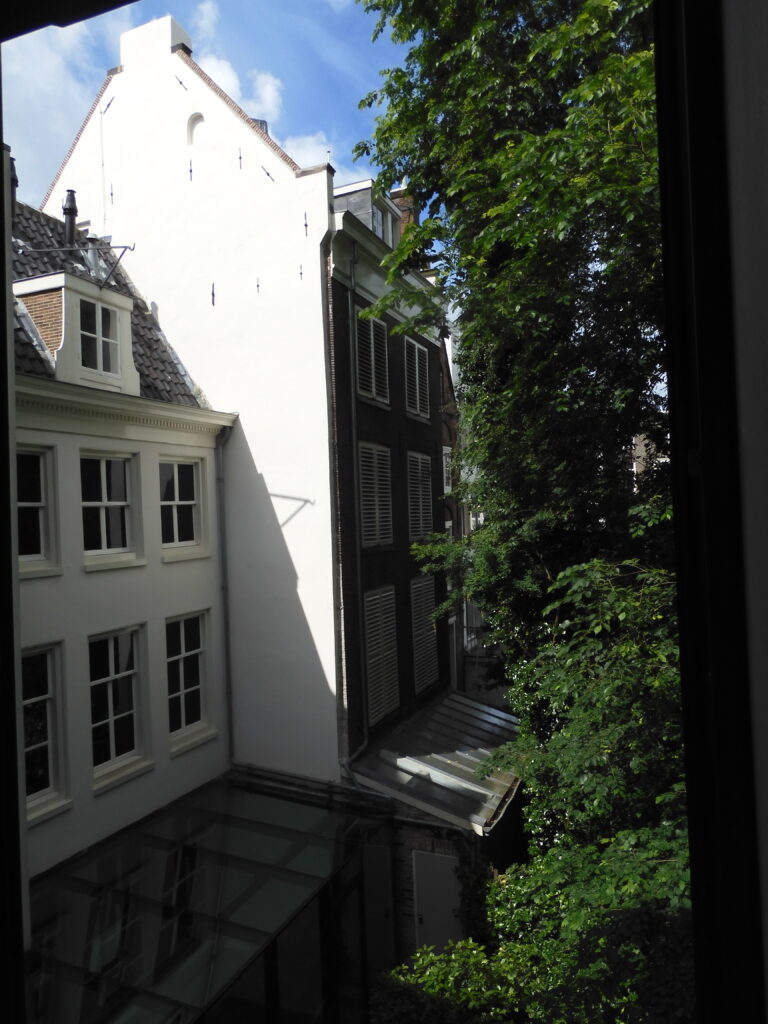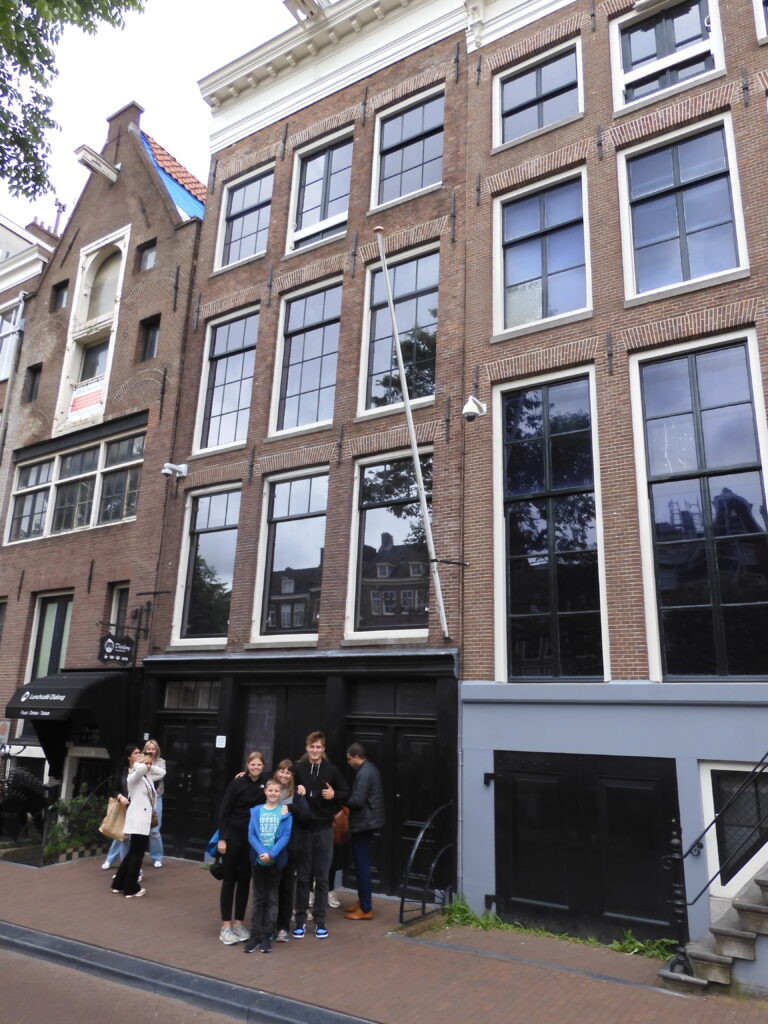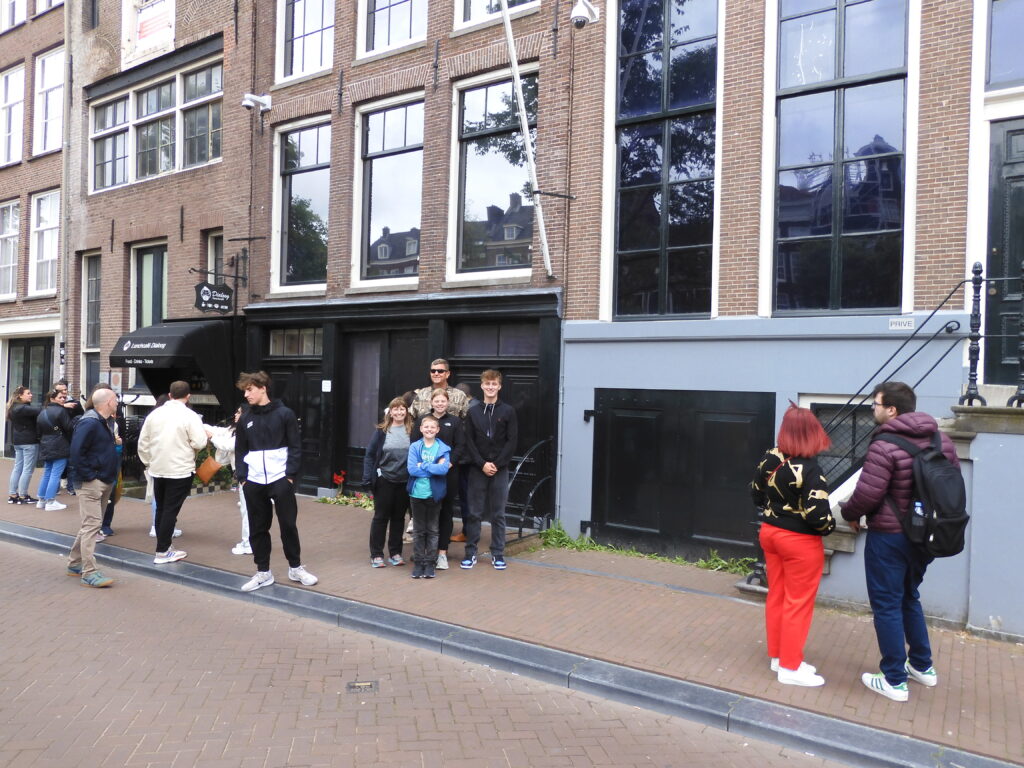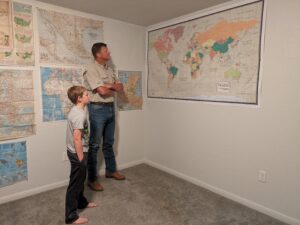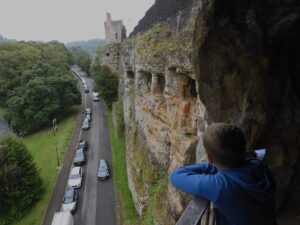The Netherlands
Relaxing in the Country With Friends
We got up early Saturday morning. I knew we had to navigate two pieces of the Paris metro system on the way to the bus station for an 8:00 a.m. bus. If all went well, it would take close to an hour to get to the bus, and we needed to get there at least a few minutes before the scheduled departure to find the bus, load bags, and check documents. In an effort to make the process run more smoothly, I bought the metro tickets the night before. As often happens, we got out the door a few minutes late. We scurried down to the train station loaded with everything we brought on the trip. We looked like a family of turtles with our doubled up, stuffed packs slouching each of us slightly forward. As we approached the station, we heard an approaching train.
We knew we were within about two minutes of the scheduled departure. Missing this train would make our connection very tight. Stephanie and Kimberly pushed their tickets through the reader. They shot through the turnstile. I had the other two tickets. I shoved one through, the gate opened and Caleb rushed through. I shoved the fourth ticket in, and it came out the top with an annoying horn noise, a red “X,” and a closed gate! Alone now outside the gate, I tried again with the same result. The train was in the station. The turnstile was about six feet high, with a small gap of about two feet above it. I climbed up on the ticket reader and squeezed through the opening with my pack scraping along the ceiling of the security mechanism. Kimberly said only a few people looked at me strangely. This is because there were only a few people at the train station at 6:45 a.m. We waddled down to the platform just after the train left.
Apparently, this was the wrong train anyway. The light board above our platform said our train was delayed 21 minutes, and wouldn’t arrive for another fifteen. We could still make it, but we had to hope there were no further delays on this, or our other metro line. We switched to the subway, with me shooting through the handicap turnstiles behind Caleb. I felt no guilt about this having paid more than the full price for that final ticket, and no one hassled us about it. We got off the subway about a mile from the bus station with about twenty minutes remaining before our bus was scheduled to depart. This would be a very close matter with a full family with full packs. On the map, I saw a pedestrian bridge that seemed like it would cut about half the distance off of our GPS suggested route to the station. We took this, and it paid off. We made it to the bus in 10 minutes instead of what would have been at least 20. A few of us were sweaty and winded, but we crashed into the bus seats with no more logistical worries for the day – just an eight hour bus ride.
In my defense, the bus tickets were €78, and the train tickets were €608. I thought it was a no-brainer to give up four hours of time to save €530. At that moment, some others in my party may have answered differently. Our bus rolled through Northern France and stopped for about 45 minutes in Brussels, Belgium. After another short stop in Rotterdam, and a traffic snarl coming into Amsterdam, we pulled into the bus station just after 4:00 p.m. Our exchange student, Max Van Kooten, and his mother were kind enough to meet us at the station. Hessie even drove me over to the airport to pick up my rental car. The young ladies at the Avis desk were very pleasant and helpful – a nice change from many of the French customer service people. We ate very thin, topped pancakes for dinner called pannenkoeken. That just translates to pancakes. One the menu, the different alternatives all had funny names. Mine had traditional breakfast items like eggs, bacon, and sausage on it. It was called “the stout/fat farmer.” In general, these were similar to the French galettes, except that the thin pancaked was topped with other foods instead of wrapping them in crepe style. The additional ingredients in our Dutch pannenkoeken were better, but this may have been more a matter of restaurant choice than preference for one nationality’s food over another.
Hessie and Max live in Sint-Annaparochie, just a few miles from the North Sea in the Dutch province of Friesland. “Parochie” just means something like “town” or “-ville,” so the town would be in English, “St. Anneville.” We drove a 20 mile long dike to get to Friesland from the Southern part of Holland. Like Texans, many Frisians show as much or more pride in Friesland than the Netherlands. We got to experience some of this distinct local culture during our visit. On Saturday evening, however, we mostly just drove through it. We were able to see it, thanks to daylight that lasted past 11:00 p.m. Friesland is about as far north as Edmonton, so June nights are very short. Friesland is made up of mostly flat agricultural land dotted with villages. It has a quaint beauty that I found very appealing. We needed this respite even after just two days in Paris. Our stay in Friesland reinforced the building notion that our family international vacations are best planned for rural areas where we can make day trips to see the iconic city sites. We should plan to rent cars to access these rural areas and offset that cost with less expensive accommodations away from the well-trafficked areas. (Continued)
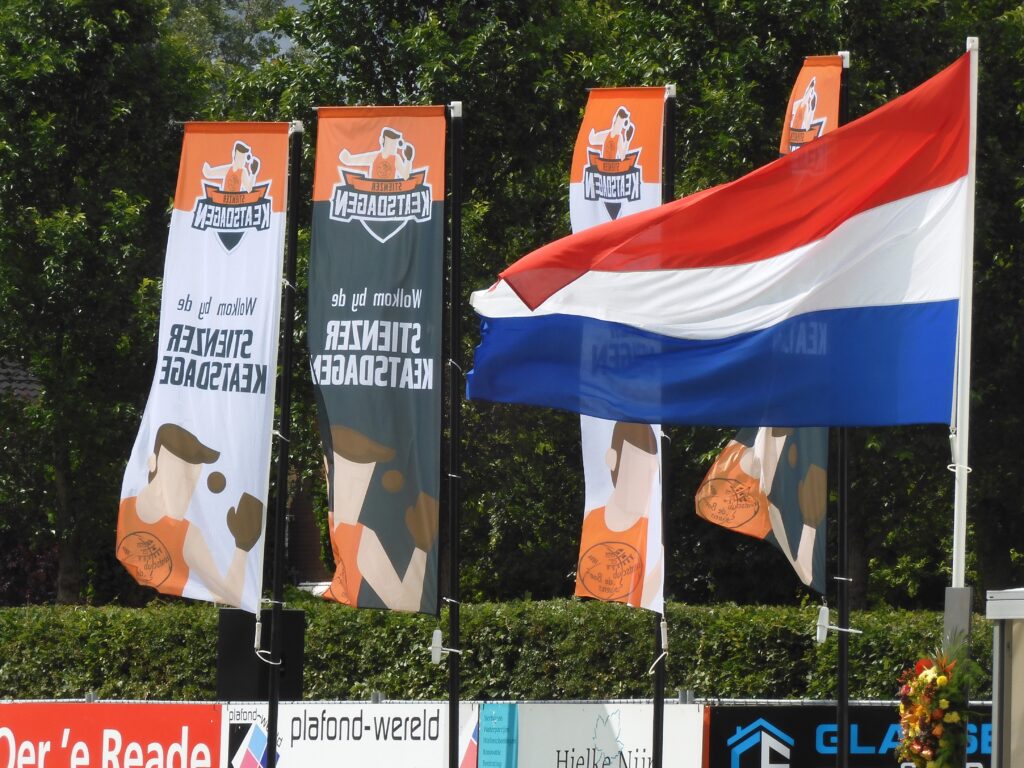
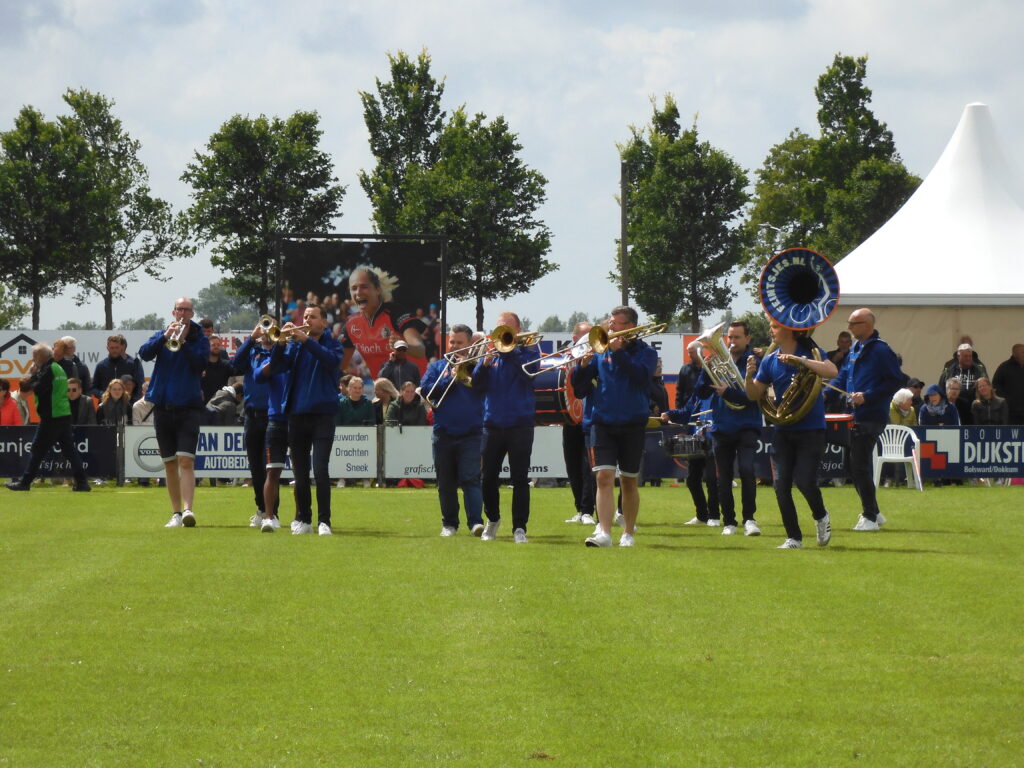
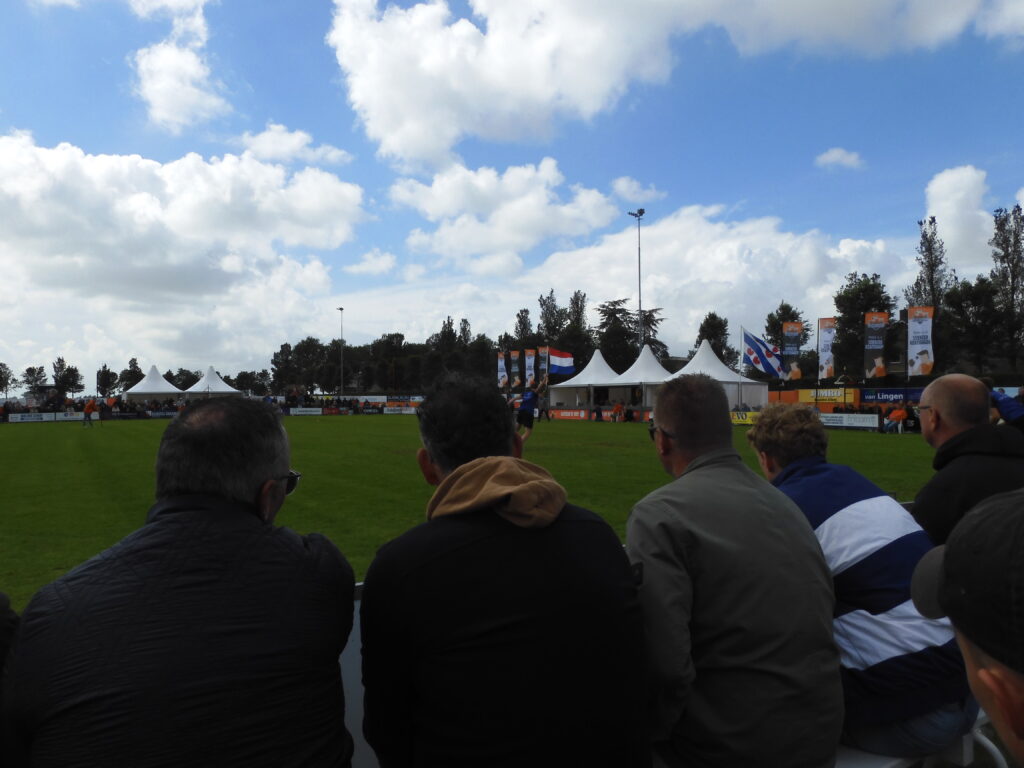
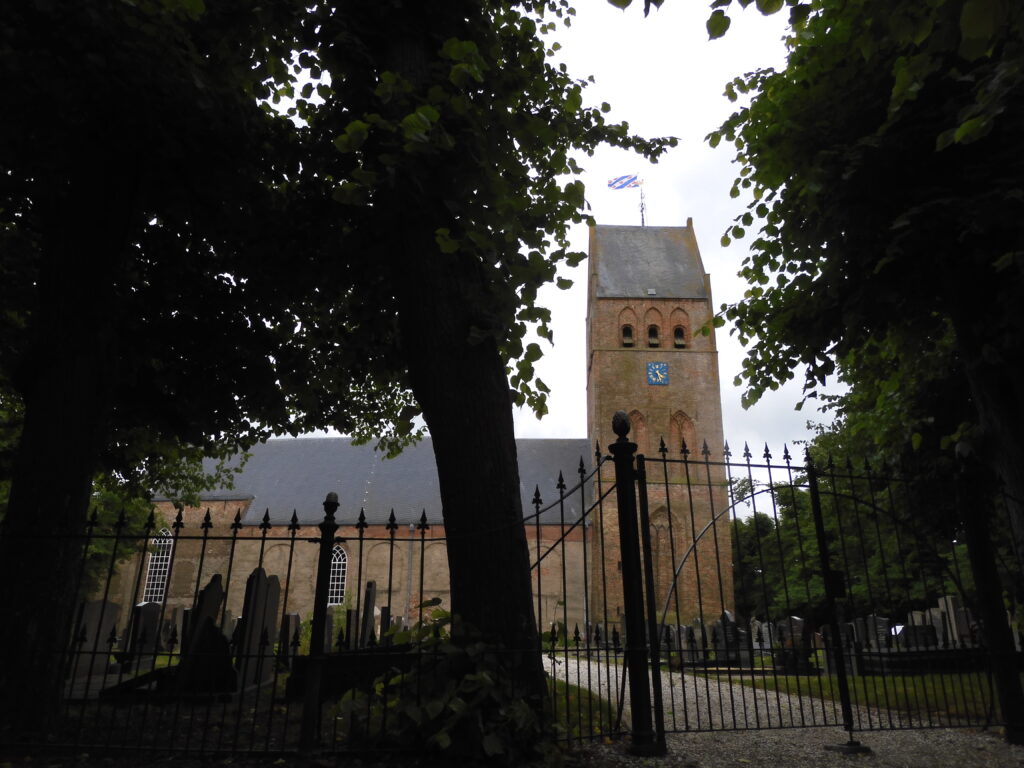
After my run we got a slow start on Sunday morning. We enjoyed more Friesian specialties for breakfast, like Suikerbrood, a heavy sweet bread that is quite tasty without being overpoweringly sweet. I did some office work, while our kids enjoyed spending time with Max and his brother, Sil. In the afternoon, we headed to Stiens, where we watched the championship match of a Frisian handball tournament. This game, keatsen, was not particularly easy to follow. It is scored like a tennis set. There are two teams of three to a side. One team underhands a small horsehair ball – somewhere between the size of a golf ball and a tennis ball – through a couple of pylons on the ground. The receiving side has a couple of players with hard leather gloves on. One of these fellows must attempt to swat the ball back toward the “bowler” before it hits the ground a second time. If he hits it over the fence, that side scores the point. If he misses it altogether, the “bowler’s” team scores a point. If the bowler doesn’t make the ball between the pylons, the receiving team scores. If the receiving team hits it back, but it doesn’t go over the fence, a kid comes out with a wooden marker and spots the location where the ball came to rest. The teams switch sides and the team that initially bowled gets a try at receiving and must hit the ball back farther than the mark to score. That may not be exactly correct, but that’s how I understood it.
There was a pretty good sized crowd for a small town. People gathered to socialize. A lot of beer was consumed. There was a local brass band playing for entertainment during the breaks. They had three trombones, four trumpets, two baritones, a sousaphone, and a drum or two. They were pretty good and played some traditional and some contemporary songs. The afternoon was cool and breezy. It threatened rain, but never came down during the tournament. People around me ate traditional fried treats. The crowd swayed to one of the songs. Banners advertising the event and its sponsors fluttered in the breeze. The crown did not get all that caught up in the game. As Hessie explained it to me, the game was more or less a walkover and so didn’t capture the attention of the crowd. Overall it was a fun cultural experience I counted as just a valuable as going to the Louvre or the Eiffel Tower.
After the game wrapped up, the music, dancing, and drinking continued for some time. None of us were in the dancing mood, and Stephanie and I don’t really drink, so we let Max talk the kids into walking over to a small fair being held in conjunction with the tournament. The kids rode a couple of adventure rides and slammed into one another on bumper cars. I wandered off to look at a nearby church building and to people watch. When I returned, the kids were on a thrill ride, and Caleb was just getting used to the motion. I saw some of the traditional fried treats. The always generous Hessie explained that these were Oliebollen, and promptly bought a bag. These were extra heavy solid donuts, about the size of a tennis ball. They were about five times the weight of a tennis ball, and were served in a sack full of powdered sugar. They were predictably tasty, and heavy enough to make one or two feel like a meal. We wandered back home and Hessie made us some curry. The day had been great.
We were unsuccessful in one thing. We did not find a church to attend. The closest church of Christ was over two hours away. In absence of company, we would have made this drive. It seemed rude, however, to take off for the entire first day we were enjoying such friendly hospitality. We certainly would have missed the keatsen, not to mention the company. Sint-Annaparochie is a town of about 5,000 and is home to only two churches, one Catholic and one Protestant. Neither had many attendees. I have read in a few places that Western Europe was “post-Christian.” The more I travel here, the more I believe that is true. I always find numerous worship opportunities in Churches of Christ when visiting Latin America. There were multiple congregations in San Jose, Costa Rica, and Cusco, Peru. Where we have seen churches in Western Europe, they are being manned by missionaries who have come from Africa to minister here. If we find a Church of Christ anywhere in the country, there might be one tiny one in the largest city. Due to the high cost of living in Western Europe, most American mission efforts eschew work here for places where they can get more “bang for the buck.” There is a need here, though. It seems like we could send at least some missionaries to a pleasant place like this, even if the cost of support might be high.
Most of Monday was rainy. It stayed dry just enough for me to go on a long run early in the morning. I made it all the way to the Northernmost dike holding back the North Sea. Although the rain moved in and increased through the day, we were able to see a rehabilitated Dutch wooden windmill in Sexbierum. The septuagenarian hoarder who had turned this windmill into an event venue spoke no English, but took quite a shine to Hessie – 30 years his junior – the only one in our party he could talk to. After we aided in her escape, we were able to see the guts of this windmill. Its original purpose had been to mill grains for oil. The current owner and caretaker claimed he had converted it to generate his own electricity and was thus fully self supporting. The gears, cogs, and drives inside were huge. All of the workings – even the teeth – were made of wood. I could not ask any questions about upkeep and how long these parts would be expected to last, but I still really enjoyed seeing it. From what I understand, many such windmills were placed on early dikes to pump out water for land reclamation. Large parts of the Netherlands are comprised of land reclaimed from the sea.
We stopped at a Catholic Church in Harlingen at Hessie’s suggestion. It was a pretty building, but seemingly not all that old. The stained glass and religious statuary had a modern art look. Harlingen had an impressive number of sail boats. Most of these seem to have been primarily used for entertainment. We did also see a church in Sint-Annaparochie that was apparently the artist Rembrandt’s wedding site. (Continued)
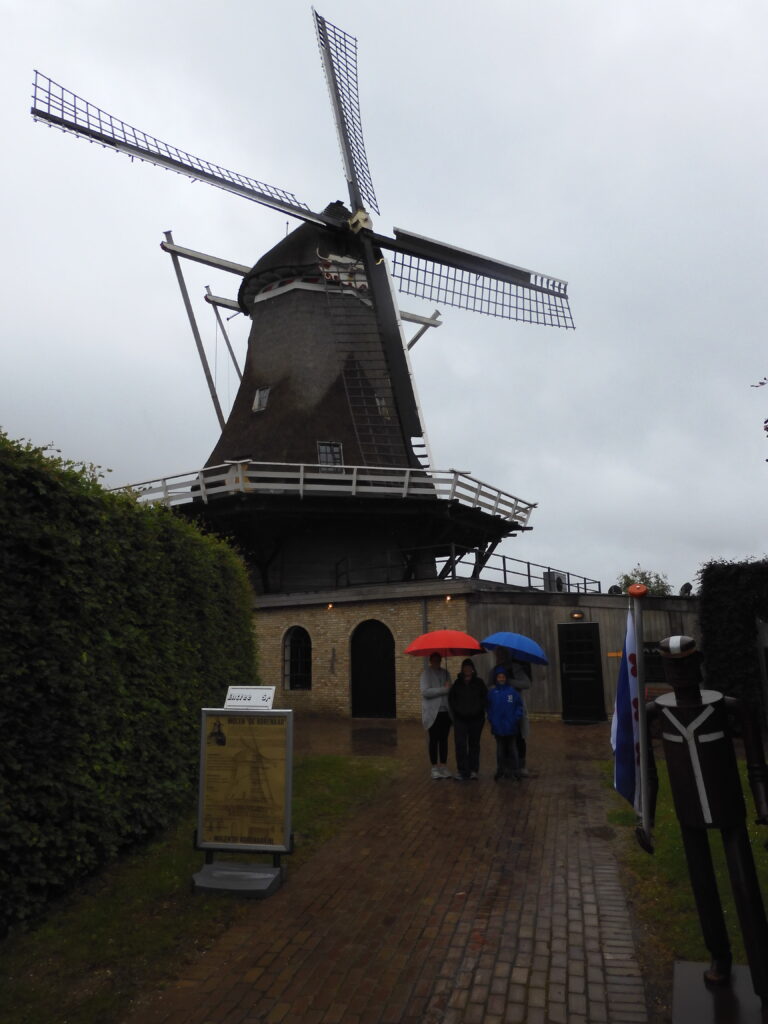
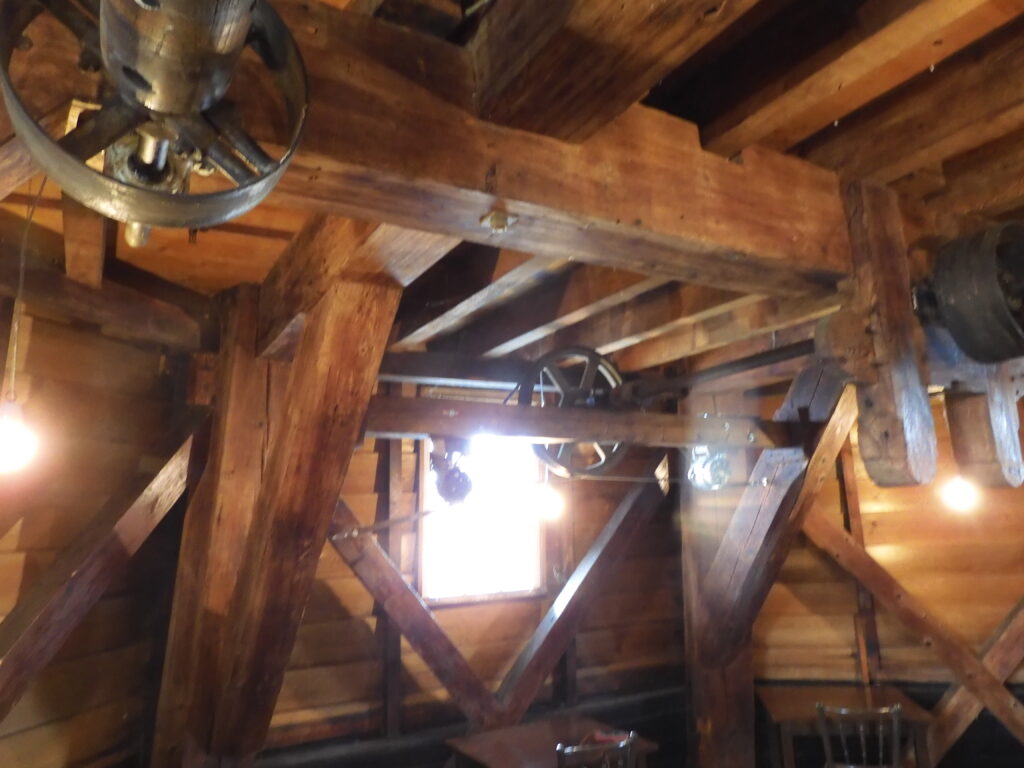

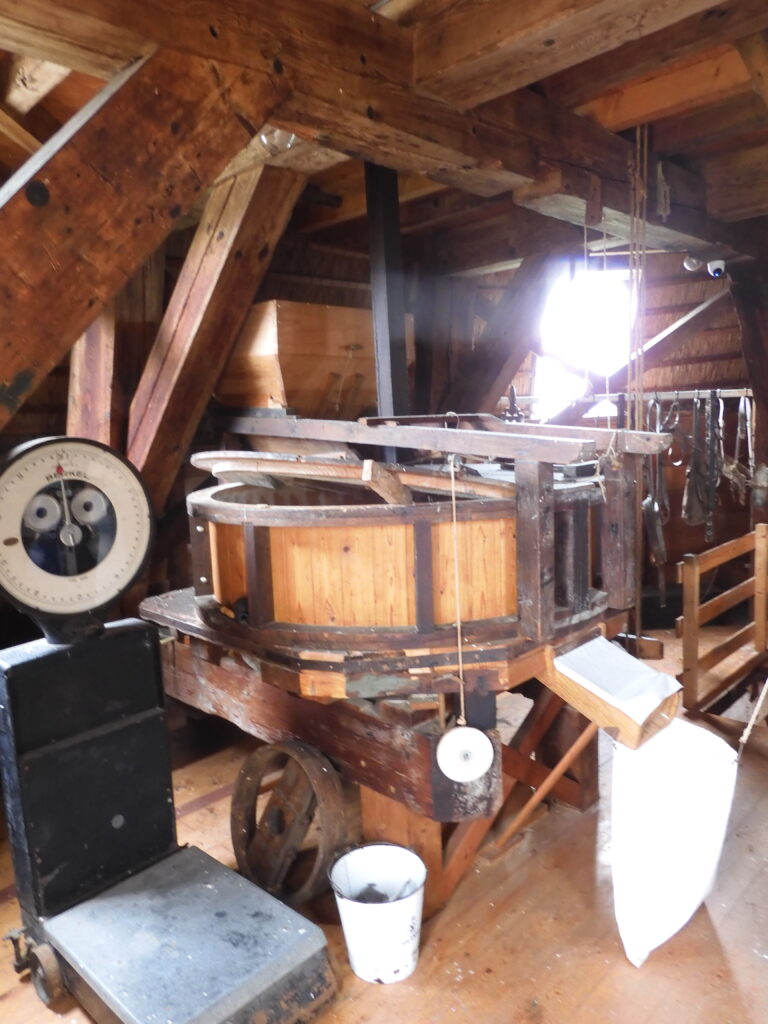
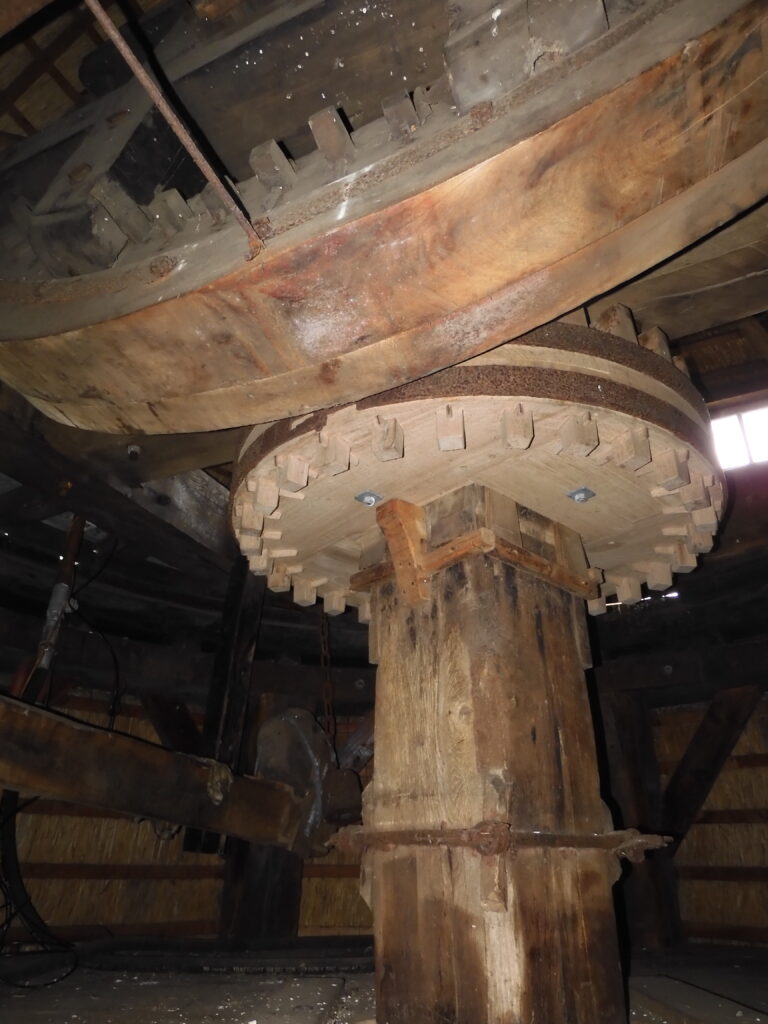
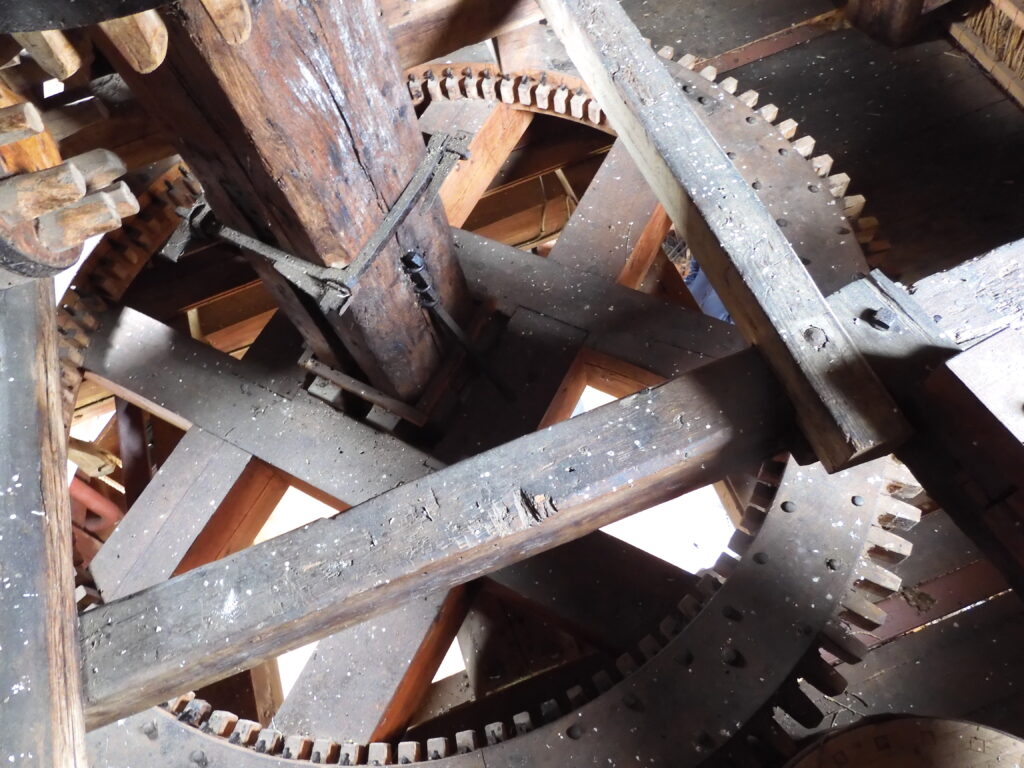
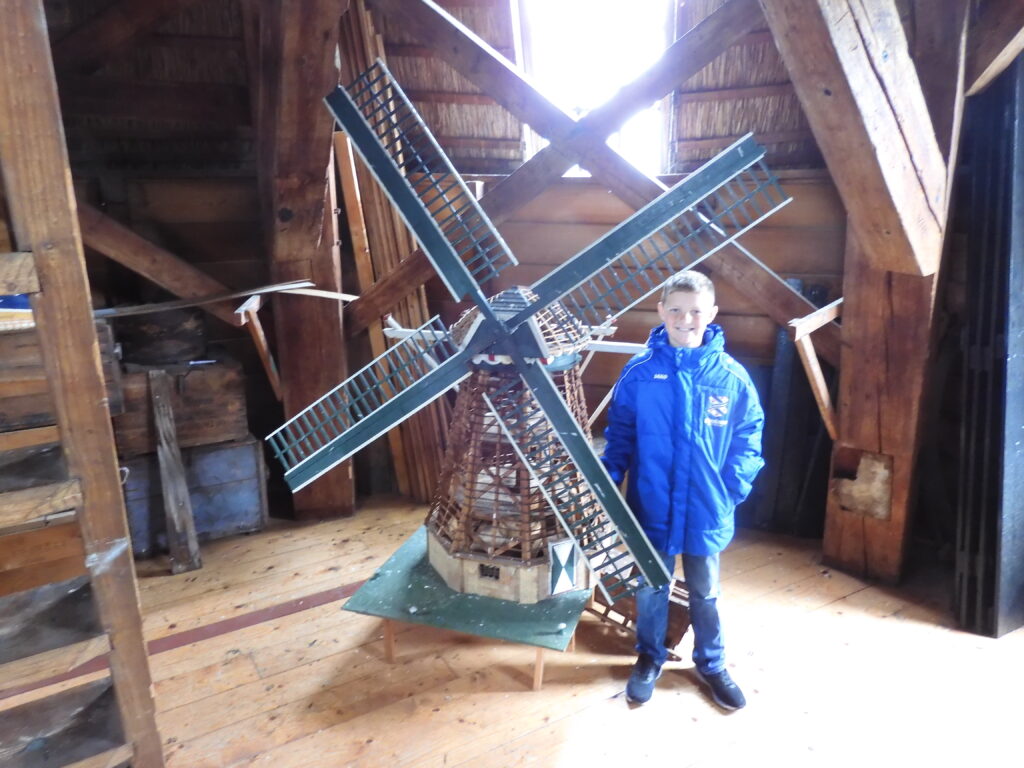

We picked Max up from school and grabbed a few groceries so that Stephanie could cook Max’s favorite dish from his American stay: chili. Apparently, not all of the ingredients in Dutch translate exactly into English, because our chili would have been appreciated more by Vun, our Thai exchange student. It was flaming hot. I think chili powder in America is just for flavor, not spice. Dutch chili powder is hot. We dumped tomato sauce and sour cream into the mix to quench the flames. We swilled milk to sooth our mouths. I sweated more than I did running seven miles that morning. Our Dutch hosts of course all praised the flavor. I noticed no one got seconds, though – not even the teen aged boys.
Stephanie is a very good cook. The flavor was good. But it was hot. Very hot.
We got a slow, late morning start driving toward Amsterdam on Tuesday. I drove the rental car with Caleb, and everyone else went with Hessie in her little car. We stopped in Volendam en route to look at their cheese factory/museum. It was quite an effort to get down there, and I think we drove through and parked in an area generally reserved for workers. Volendam was at one point a fishing village on the north end of Amsterdam. Now, it seems more like a tourist trap. Even the cheese museum/factory was really just a cheese shop with a couple of rooms explaining how cheese was made and touting the supremacy of Dutch cheeses. They did offer samples, of which I thought the old truffle was best. The girls bought a few souvenirs in the countless shops along this tourist walk, then we headed into downtown Amsterdam to look at the Van Gogh museum.
We arrived at our downtown parking garage about an hour and a half ahead of our museum entry time. The only bad thing about this was that we ended up paying over €40 each just to park. We sat in a big square on what amounts to “museum row” in Amsterdam. A large garden directs you toward the Rijksmuseum, known mostly for holding various important artworks primarily from Dutch masters. We watched people. A group of dancers plied their trade around a man with an outdoor sound system set up on the sidewalk. Caleb played chess on a plastic set with pieces nearly as big as him against an older man who charitably kept directing him to take moves back. The language barrier made it somewhat difficult for the older gentleman to explain why Caleb’s moves were unwise. Eventually, an onlooker awaiting a turn convinced him to let Caleb self-immolate so the game would end. This worked out well, as our time to enter the Van Gogh Museum was approaching.
The museum was very well done, for the most part. Stephanie was a bit disappointed to see only one sunflower painting. There were several seascapes that I thought were very nice. I was unaware that these were part of Van Gogh’s repertoire. His thick application of paint and use of whites, blues, and other colors really show the movement and changing hues of the ocean tides. The museum nicely explains Van Gogh’s use of thick sort of blotches of contrasting colors to create an impression that although it still looks fairly realistic from a distance reflects something more about the mood or feeling of a subject. In the pictures, I have alternated some distant and close-up shots to highlight this technique. They explain also that Van Gogh was not at all interested in the actual colors of his subjects, but rather how he might use colors to convey something deeper about mood and feeling. For example, he has a painting of fieldworkers toiling near a cart and a plow around harvest time. Blue is usually a very “cool” color. But his hue of blue juxtaposed against the yellows of the fields ripe for harvest give a sense that these guys are out there doing some very hot work. The contrast with this particular blue on these yellows really does make you feel like it’s hot out there.
I am not an art specialist, and most of these things I would have never noticed without them being pointed out. It does make some sense to me, as I see it explained. And as I mentioned after visiting the Prado, I think I have gained a sense of the greater progress of art over time. Van Gogh’s blotches and use of color to generate feeling are probably about as far as I can go down the road to modern art. But I like Van Gogh, and I like Monet. They have a few very nice Monets here as well.
From the museum, we headed out to a dairy farm where our AirBnB was located. We talked to the dairy workers and figured out how to get in. This apparently had been a help house at some point, but it worked out just fine for us. June 12. Our crew got off to a slow start Wednesday morning. I ran early and updated my farm work. Hessie picked up her friend, Jeff from the airport. Sometime around 1:00 pm., we headed down to park near the metro station where we rode down to the Albert Cuyp Market where Stephanie bought a few souvenirs on her last full day in Europe.
Our primary objective in Amsterdam was to visit the Anne Frank house. This was Kimberly’s top request on our trip. We had a 3:30 appointment. For anyone familiar with the Anne Frank story, there is not a lot new here. The main draw is walking through the building to see where the family hid. They do also have Anne Frank’s original diary, and her rewrite of it. No photos are allowed in the building, so I have relatively little to show from that stop. They even have you remain silent through the areas where the Franks and their companions hid. This did not seem inappropriate. The visit should be a nice complement to our upcoming time at Auschwitz.
We hiked from the Frank house to an all you can eat sushi restaurant in the canal district. We had some difficulty getting used to the ordering scheme, but the food was good, and so was the company. We wrapped up our last full day in Amsterdam by returning to the house to clean out all of the ice cream. We made final arrangements for Stephanie and Kimberly to depart the next day. Hessie and Max made our visit to the Netherlands extra special, and we can’t thank them enough for their hospitality. It was a great stay.
